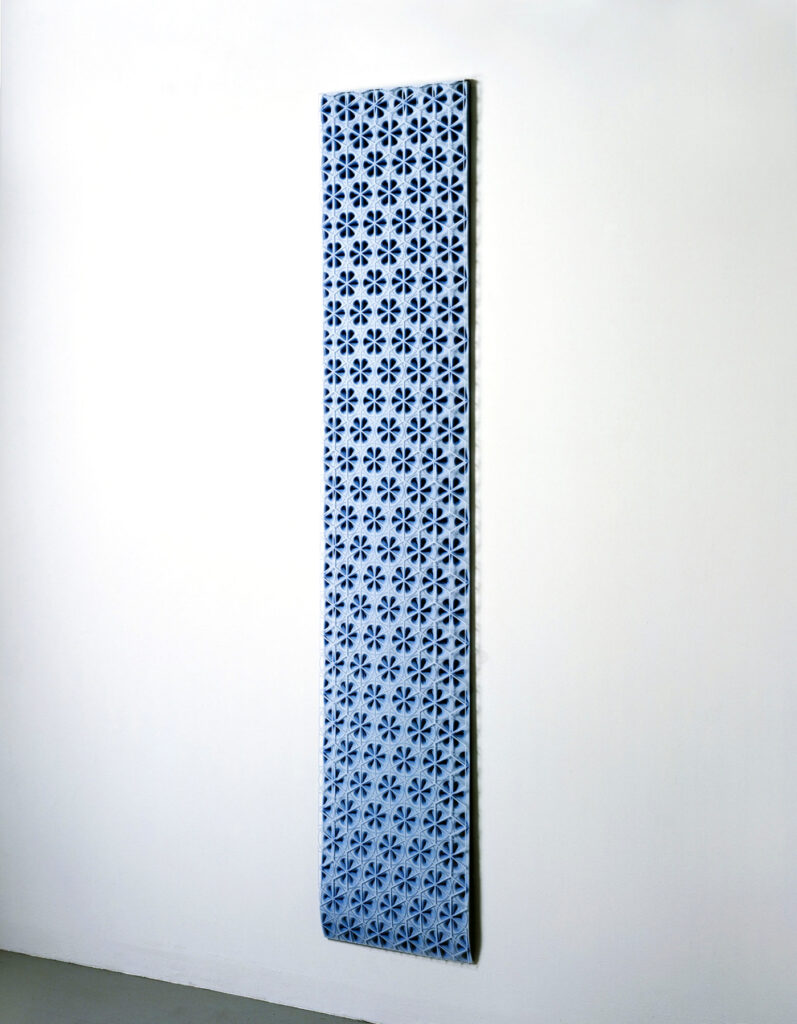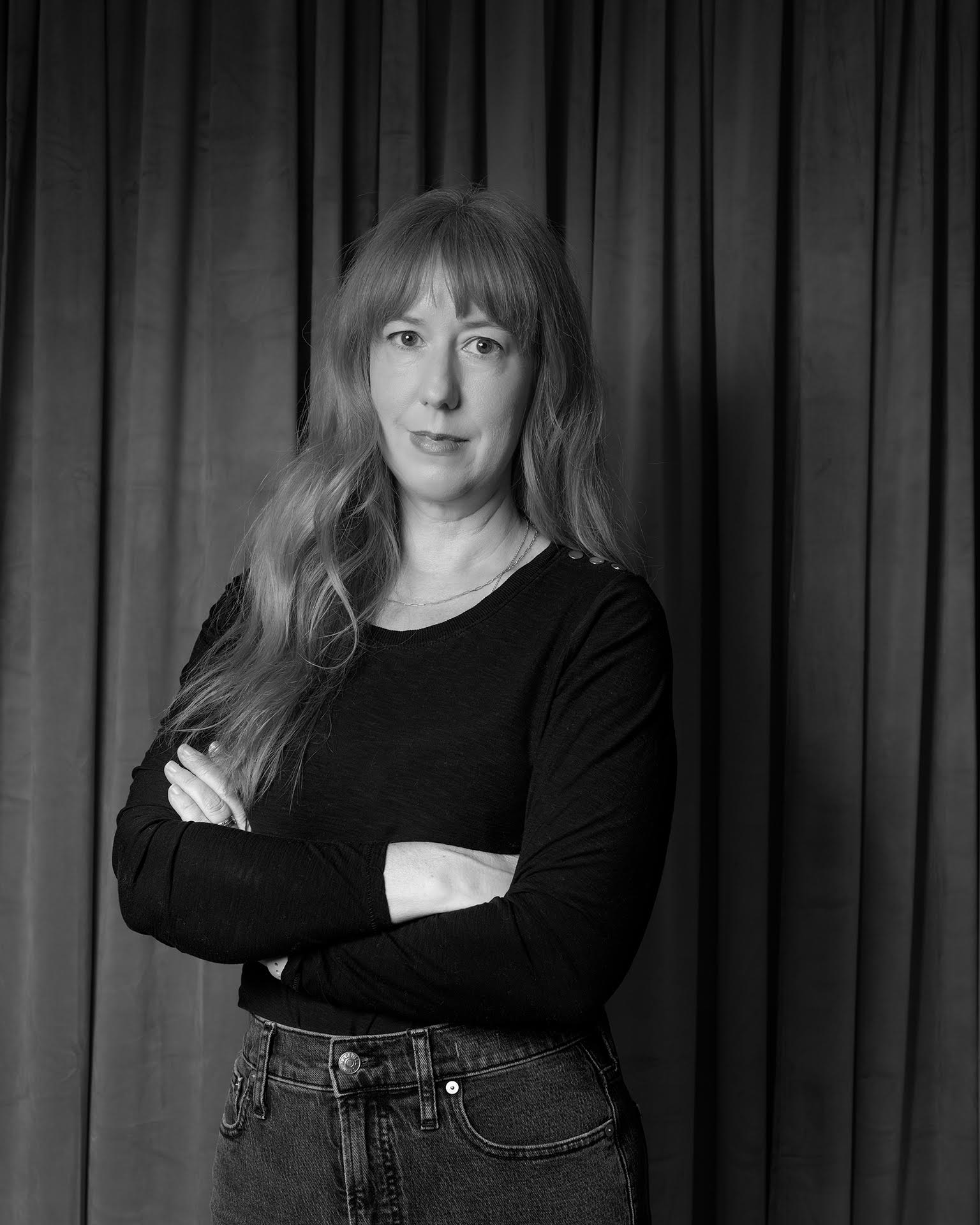Imi Hwangbo presents “Lepidoptera” at Zuckerman Museum at Kennesaw State University

Imi Hwangbo, Lepidoptera. Hand-cut mylar.
Last Updated
September 21, 2025
Published
January 11, 2023
Category
Faculty News
Featuring
Imi Hwangbo
Academic Area
Studio Art Core
Professor Imi Hwangbo in the Studio Art Core program is exhibiting her work in a solo project titled Lepidoptera at the Zuckerman Museum of Art at Kennesaw State University from January 10 – July 29, 2023. The exhibition presents her work in constructed drawings, an art form in which she cuts and layers translucent paper in such quantity that sculptural forms are created. Professor Hwangbo’s imagery is based on the ornamentation of Buddhist temple doors and Korean decorative arts, with traditional patterns reconfigured and expanded into space.
This exhibition will take place on the Zuckerman Museum’s Project Wall North. Designed by architects Stanley Beaman and Sears in 2014, the Zuckerman Museum of Art presents exhibitions of contemporary art by nationally-recognized artists such as Leonardo Drew, Lesley Dill, and Oscar Muñoz.

The selected work by Hwangbo, Lepidoptera, is a large-scale work from the artists’ Portal series, created from hand-cut mylar. Hwangbo’s Portal series is a body of work exploring the notion of three-dimensional drawing. These pieces are made with multiple layers of paper that are printed, cut, and layered in such quantity that sculptural forms are created. The pieces are made with up to thirty layers and can be up to three inches deep. Professor Hwangbo elaborates, “This series of work is based on the decorative patterns and imagery from Korean wrappings cloths, called pojagi. These four-cornered cloths, which are used for wrapping, carrying, or covering objects, are often decorated with geometric patterns and floral motifs.”
Zuckerman Museum of Art
A unit of Kennesaw State University’s School of Art and Design, the Bernard A. Zuckerman Museum of Art serves as a vital academic resource and cultural focus for students, faculty and members of the community. The Zuckerman presents significant works from the University’s permanent art collection and regularly exhibits contemporary works of various media by local and nationally-recognized artists. The Museum’s Fine Arts Satellite Gallery in the Wilson Building features faculty, student and alumni projects. The ZMA also serves as a center for education and professional development.
Artist Bio
Ms. Hwangbo’s work has been acquired by major corporations including Fidelity Investments, the Dana Farber Cancer Institute, and the Peninsula Hotel in Hong Kong. Her work in constructed drawing has been exhibited in solo shows at the Volta Art Fair and the Pavel Zoubok Gallery in New York City, and the Miller Yezerski Gallery in Boston. She has shown her work in the biennial “Women to Watch” exhibition sponsored by the National Museum of Women in the Arts. Group shows include exhibitions at the Jepson Center for the Arts, the Bell Gallery of Brown University, the International Print Center New York, the Art on Paper Fair, the Weatherspoon Art Museum, and the Atlanta Contemporary Art Center. Articles and reviews of her work have appeared in The Huffington Post, Art in America, Sculpture Magazine, The Boston Globe, the Washington Post, and the Atlanta Journal-Constitution. She is a professor of art at the University of Georgia.
Her current work explores the notion of constructed drawings and prints. The pieces are fabricated with paper that is colored, cut in elaborate patterns, and layered to create three-dimensional reliefs. Her imagery is based on the ornamentation of Buddhist temple doors and Korean decorative arts. In her work, these traditional patterns are reconfigured and expanded into space. Light is used a medium to convey the image, with patterns gaining depth through the translucent layering of light and shadow. As art critic Lilly Wei has written: “Hwangbo’s geometric motifs and lacy botanicals are related to traditional designs, filtered through a modernist syntax of diamonds, circles, and squares configured as infinitely expandable systems in which solids and voids are similarly important and mind and dream intertwine.”





